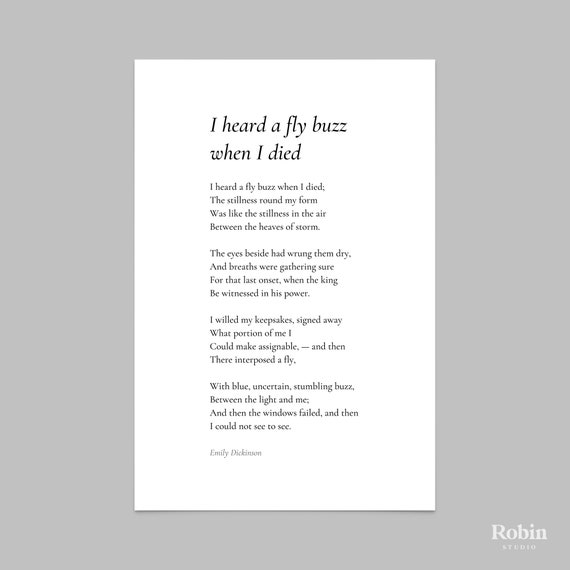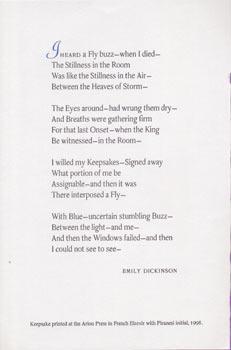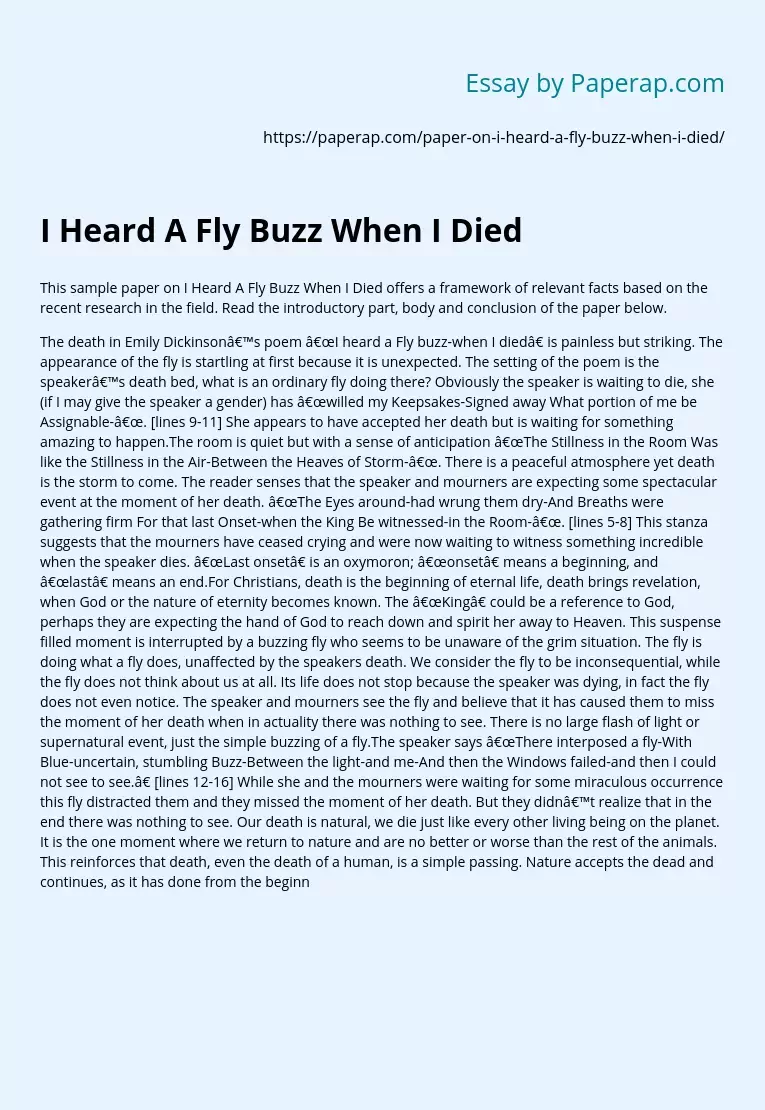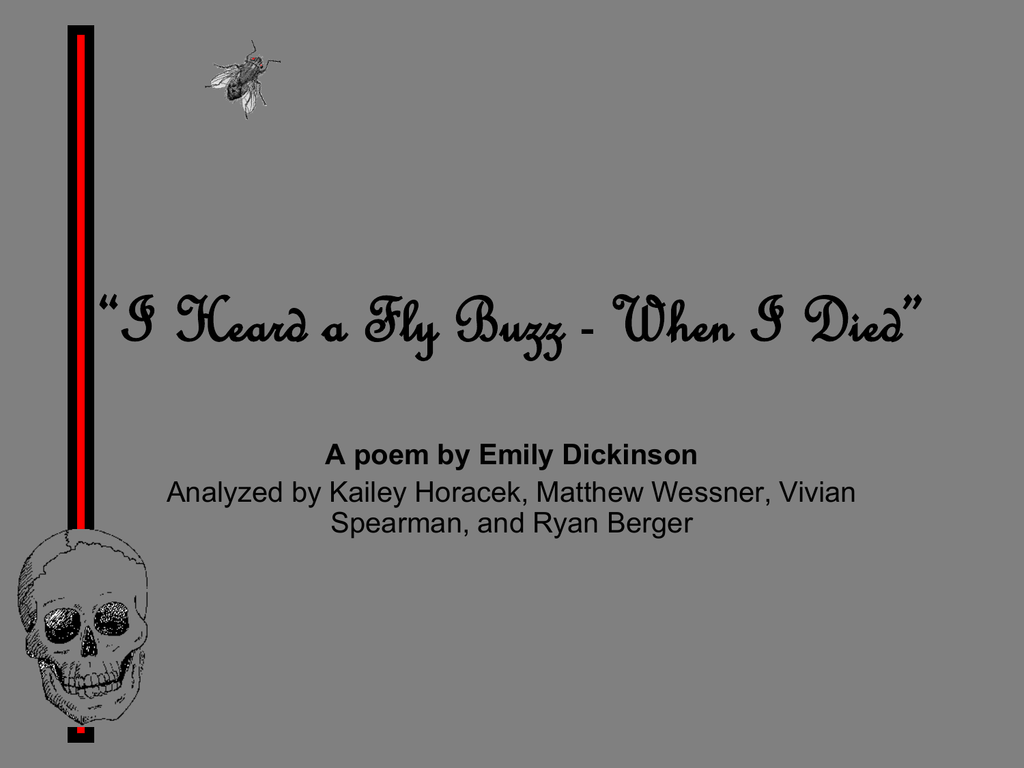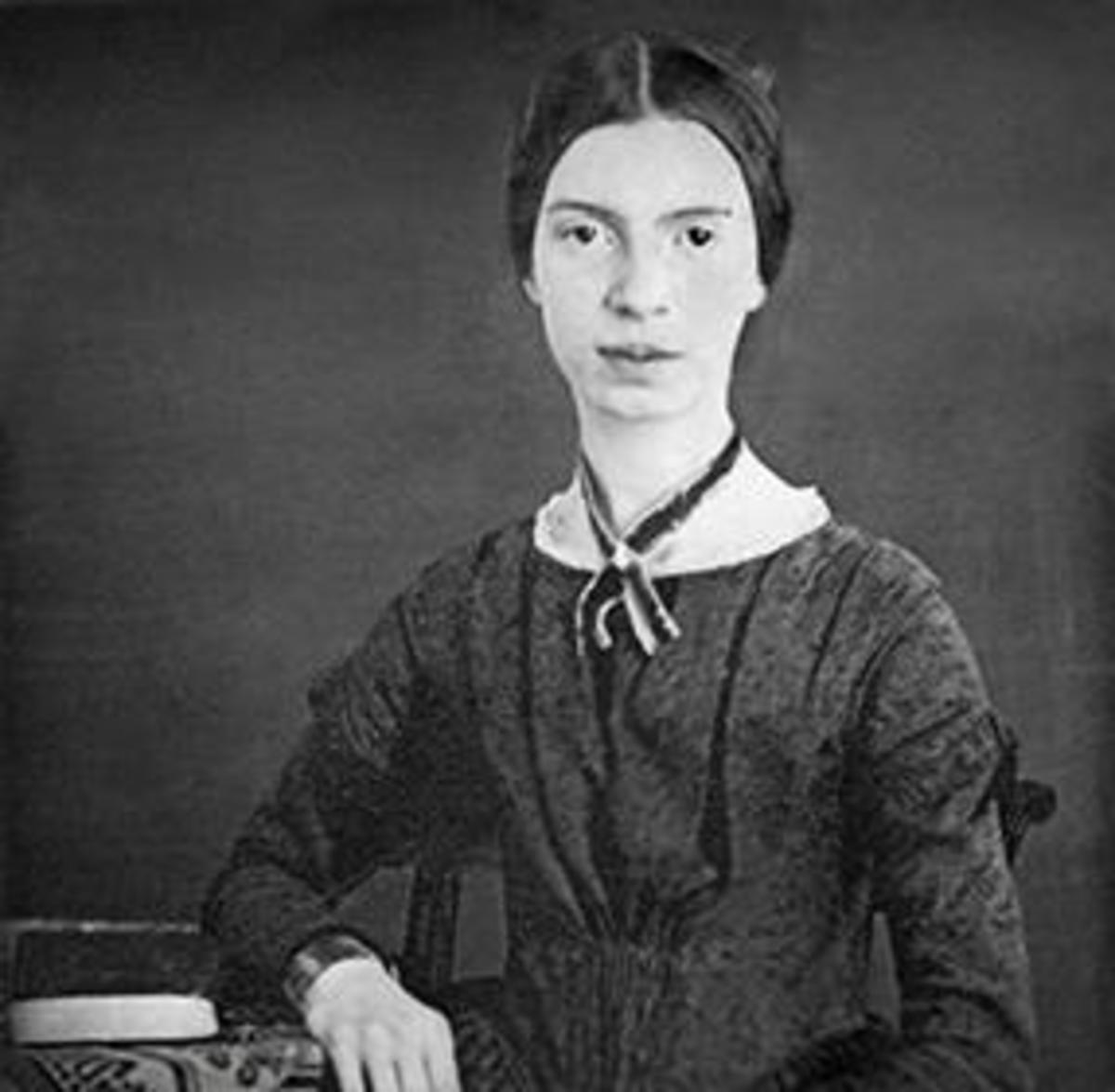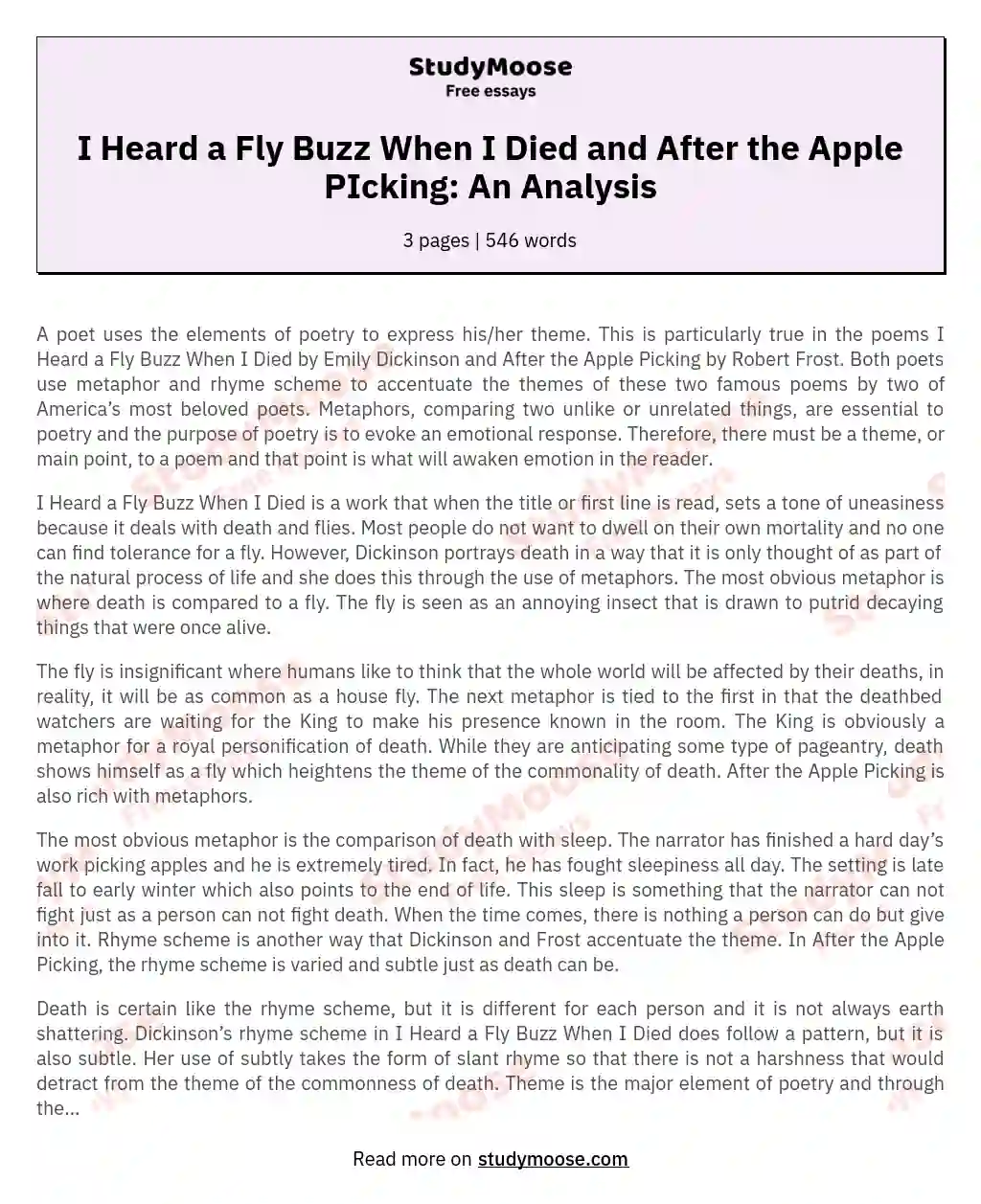I heard a fly buzz when I died; The stillness in the room Was like the stillness in the air Between the heaves of storm.
The eyes around—had wrung them dry, And breaths were gathering firm For that last onset, when the king Be witnessed in his power.
I willed my keepsakes, signed away What portion of me I Could make assignable, and then There interposed a fly—
With blue, uncertain, stumbling buzz, Between the light and me; And then the windows failed, and then I could not see to see.
This poem, titled "I heard a fly buzz when I died," was written by Emily Dickinson in the mid-19th century. It reflects on the moments before death, and the sudden interruption of a fly that disrupts the quiet and peaceful atmosphere.
The speaker in the poem is lying in their deathbed, surrounded by loved ones who are mourning and preparing for their final moments. The room is described as being still, like the calm before a storm, as everyone waits for the final breath to be taken.
However, in the midst of this solemn and somber moment, a fly appears, disrupting the quiet with its "blue, uncertain, stumbling buzz." The fly is described as being "between the light and me," symbolizing the barrier between life and death that the speaker is about to cross.
In the final lines of the poem, the windows fail, and the speaker can no longer see. This could be interpreted as the speaker's vision fading as they near death, or it could symbolize the inability to see beyond the physical world and into the spiritual realm.
Overall, "I heard a fly buzz when I died" is a poignant and thought-provoking poem that explores the theme of death and the fleeting nature of life. The fly serves as a reminder of the unpredictability and unexpectedness of death, and the ultimate inability of humans to control their own demise.

